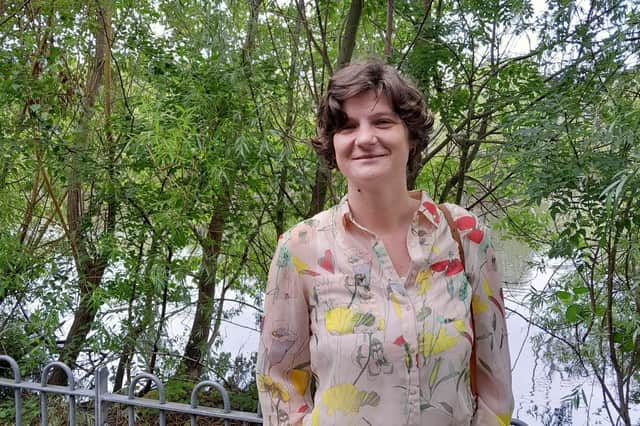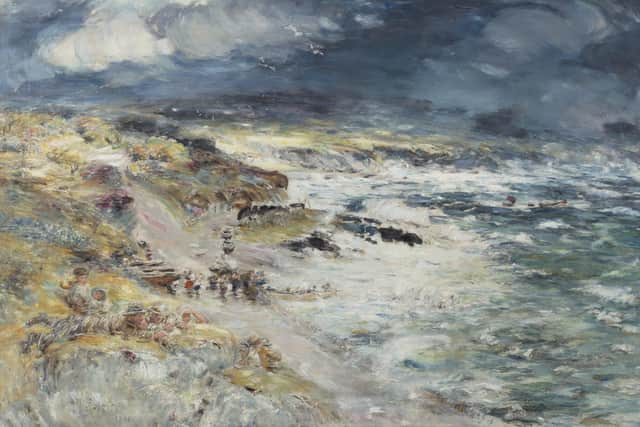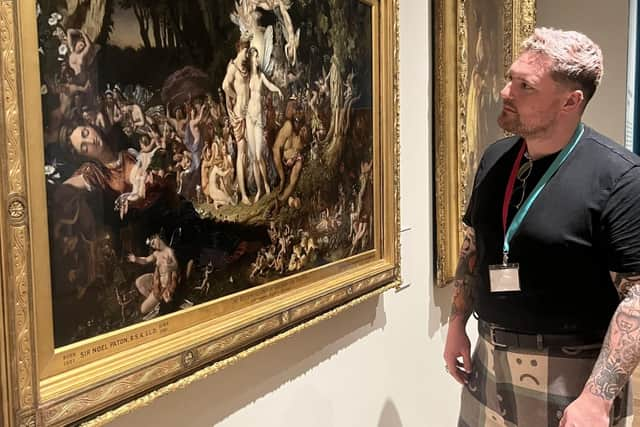National Gallery of Scotland: the staff's sneak preview of their favourite Scottish artworks in advance of opening


It’s the cultural countdown to the completion of the Scottish National Gallery Project.
The National Gallery of Scotland’s 12 accessible and new Scottish galleries will open to the public on Saturday September 30, in order to showcase 150 years of Scotland’s art with work from the likes of Anne Redpath and William McTaggart. In advance of this occasion, we asked gallery staff to tell us about their favourite pieces.
Stefan Kellhofer, project volunteer coordinator
Advertisement
Hide AdAdvertisement
Hide Ad

Selected artwork: Sir Joseph Noel Paton, The Reconciliation of Oberon and Titania (1847) purchased by the Royal Scottish Academy 1848; transferred and presented to the National Gallery of Scotland in 1910
“I’m delighted visitors will have the opportunity to see this painting at the new Scottish galleries at the National. It has always fascinated me because it’s so beautiful and tells an enchanting story. The new gallery space gives visitors a chance to get close to the artwork and experience the level of loving detail that has gone into this world. What has always intrigued me about this artwork is the sheer number of fairies that Paton has included. The canvas is teeming with these magical beings, each one uniquely depicted with exquisite attention to detail. The abundance creates a sense of whimsy and enchantment that draws viewers into the fantastical world of Shakespeare’s A
Midsummer Night’s Dream. It offers everyone a chance to see how Paton has brought these fairies to life – their delicate features, translucent wings, and mischievous expressions. Their presence in such numbers adds depth and complexity to the composition, making it feel like a bustling, ethereal gathering. This really comes across in the new space, where you can feel the painting drawing you in and you notice new details”.
Mara Barth, learning officer


Selected artwork: Phoebe Anna Traquair, The Progress of a Soul (1902) bequest of the artist, 1936
“Heavy with narrative and symbolism, Traquair’s four panels of embroidery are only some of the many splendid works now on display at the beautiful new Scottish galleries at the National. And in their new home they truly sing! I have just recently had the privilege to see them in the new gallery and they took my breath away. The colours gleam in the light and the threads shimmer giving these works a whole new lease of life.
I remember these from the previous gallery spaces and I’ve also seen them in the store many times over the years – always stopping to admire their intricacy and detail. It fills me with joy that this incredible artwork is now being shown in its very best light and will be admired by many visitors in years to come – intriguing and inspiring with their technique, material, sheer beauty and the spectacular talent of Phoebe Anna Traquair”.
Victoria Gazeley, security attendant


Selected artwork: William McTaggart, The Storm (1890) presented by Mrs Andrew Carnegie 1935
“I would be hard-pressed to pick a favourite artwork out of the National Galleries of Scotland’s collection, but I do have a soft spot for the McTaggart’s seascapes. I am delighted they have returned to our new gallery space.
Advertisement
Hide AdAdvertisement
Hide AdI got emotional seeing the new Scottish galleries for the first time. Some of my most challenging days and nights of work were overseeing the security of the different stages of the new galleries, especially the beginning. It was fantastic seeing the results, I was not disappointed. It was like a breath of fresh air, and there is a new energy. Viewing the artwork installed in the space is like having old friends return, this time in an exhibition space that does them justice. There is so much more that can be seen.
I have worked for National Galleries of Scotland for eight years, and I can remember what the area looked like before. It is fun to walk around with an imaginary layout of where everything used to be, the print room, the offices, and other spaces. I remember on my nightly patrols thinking what a shame it was that the views of the gardens and train lines were limited to those who worked in the offices. I am so pleased that our audiences can now enjoy the view as well. We now have a space that will match the calibre of our Scottish collection, and I am excited to see the public’s reactions when it opens”.


Charlotte Topsfield, senior Curator, British Drawings and Prints
Selected artwork: Charles Rennie Mackintosh, Mont Alba (about 1924-1927), purchased 1990
“I’m looking forward to revealing our new displays of Scottish works of art on paper. There are three spaces where we will show changing selections of drawings, watercolours, prints, sketchbooks and photographs. One of my favourite watercolours, Mont Alba, by Charles Rennie Mackintosh, will be on show when the new galleries open. Mackintosh is famous throughout Scotland and the world as an architect and designer, but in the 1920s he concentrated on painting in watercolour. He moved to the south of France in 1923 with his wife, Margaret Macdonald (whose work will also be on show) and painted the hill towns and landscape in the Pyrenees and on the Roussillon coast. The view here is a road that twists and forks up to a remote mountain farm, but the subject is really the patterns and rhythms that Mackintosh saw in the landscape. The curving patchwork of fields swells like a great sea against the jagged rocks and the blues and greens stand out like stained glass. Mackintosh understood the essence of watercolour – the sheer joy of colour and how to capture light. If you love watercolour, then you will love these”.
Comments
Want to join the conversation? Please or to comment on this article.